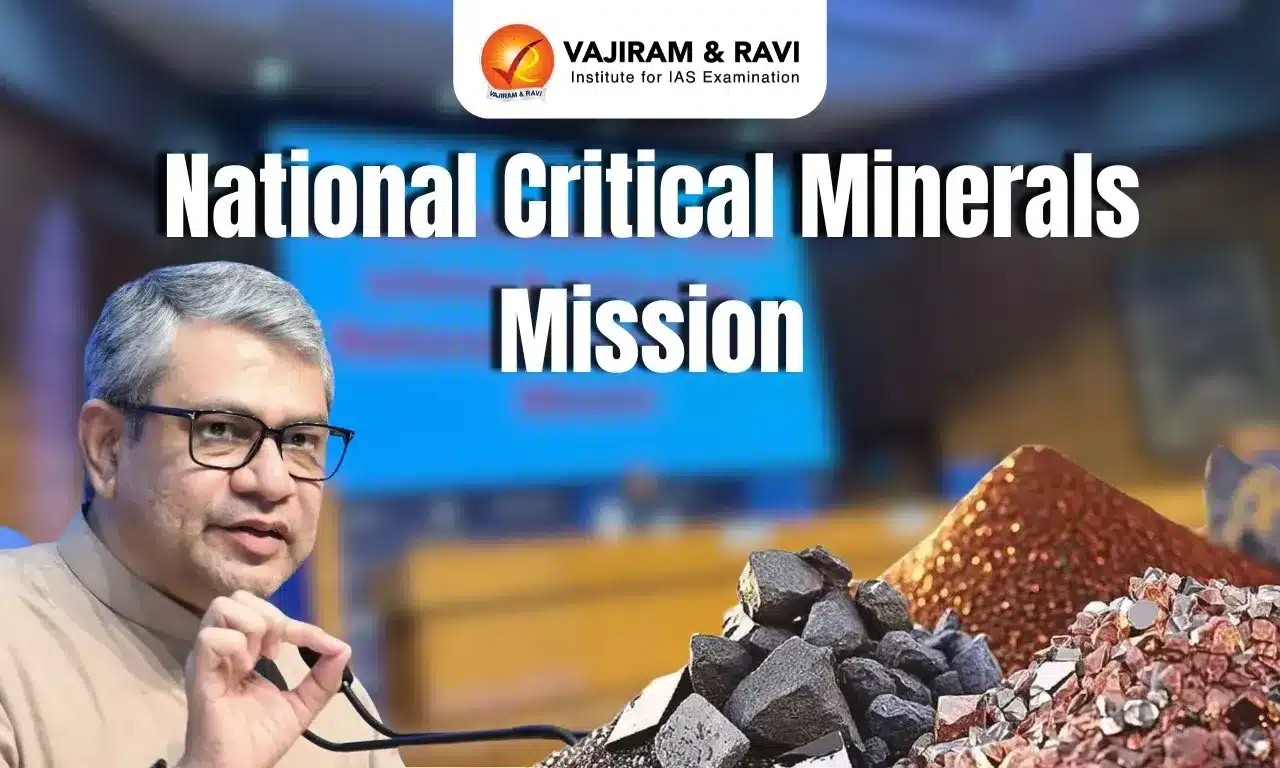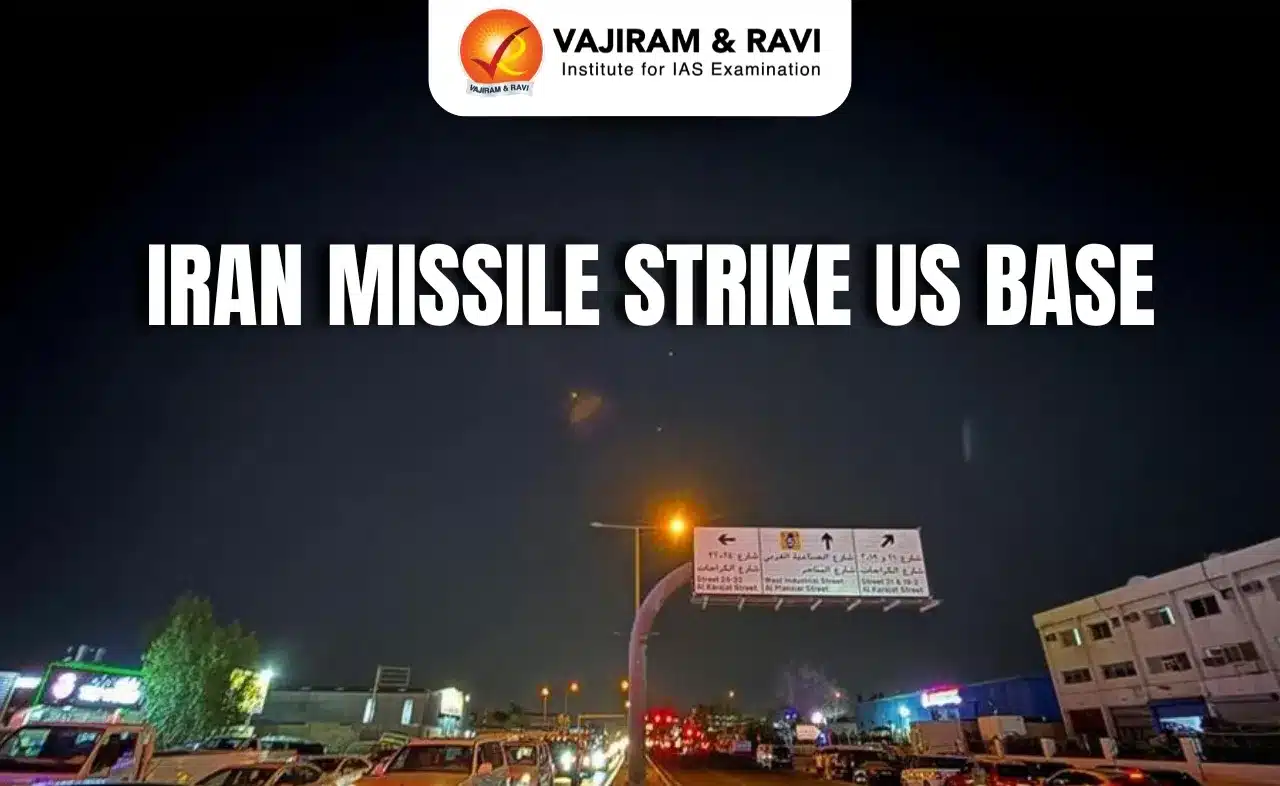What’s in Today’s article?
- National Critical Minerals Mission Latest News
- Objectives and Key Features of the Mission
- Significance of Critical Minerals
- Government Strategy and Implementation
- Key Implementation Measures
- Impact on India’s Energy Transition
- Challenges and Way Forward
- Conclusion
- National Critical Minerals Mission FAQs
National Critical Minerals Mission Latest News
- The Indian government has approved the National Critical Minerals Mission (NCMM) with a total outlay of ₹34,300 crore over seven years.
- The mission aims to reduce import dependence on critical minerals, boost domestic exploration and processing, and accelerate India’s shift towards green energy technologies.
Objectives and Key Features of the Mission
- The NCMM will focus on the following key objectives:
- Enhancing Domestic Exploration: A significant portion of the mission’s funds will be allocated to intensifying mineral exploration across the country and in offshore areas.
- Reducing Import Dependence: India heavily relies on imports for critical minerals like lithium, cobalt, nickel, and rare earth elements, essential for electric vehicles (EVs), battery manufacturing, and renewable energy technologies. This mission aims to curb that dependence.
- Developing Processing and Recycling Capabilities: The mission will encourage investment in mineral processing parks, recycling technologies, and research on sustainable extraction methods.
- Overseas Mineral Acquisitions: Public sector enterprises and private companies will be encouraged to acquire mineral assets abroad to ensure a steady supply of critical minerals.
- Regulatory and Financial Support: The mission will streamline regulatory approvals and offer financial incentives for mineral exploration and development.
Significance of Critical Minerals
- Critical minerals such as copper, lithium, nickel, cobalt, and rare earth elements are essential raw materials for modern industries. They are widely used in:
- Renewable Energy Infrastructure: Wind turbines, solar panels, and electricity networks.
- Electric Vehicles (EVs): Batteries and charging infrastructure.
- Electronics & High-Tech Industries: Smartphones, defense equipment, and medical devices.
- As the world transitions to clean energy, demand for these minerals is soaring, making their domestic availability crucial for India’s long-term economic and technological security.
Government Strategy and Implementation
- The Union Cabinet, chaired by Prime Minister Narendra Modi, has approved a government expenditure of ₹16,300 crore, while an additional ₹18,000 crore is expected to be invested by public sector undertakings (PSUs) and private companies.
Key Implementation Measures
- Expedited Mining Approvals: The mission will establish a fast-track regulatory process for mineral mining projects.
- Stockpile Development: A strategic stockpile of critical minerals will be built to safeguard India’s supply chains.
- Policy Reforms: In 2023, the Mines and Minerals (Development and Regulation) Act, 1957 was amended, enabling the auction of 24 strategic mineral blocks.
- Geological Survey of India (GSI) Exploration Projects: Over the past three years, the GSI has initiated 368 mineral exploration projects, with 227 projects planned for 2025-26.
- Import Duty Waivers: The government has removed customs duties on several critical minerals in the FY25 budget to encourage domestic processing and manufacturing.
Impact on India’s Energy Transition
- The NCMM is expected to:
- Secure mineral supply chains for India’s clean energy sector.
- Boost domestic manufacturing of EV batteries and renewable energy components.
- Strengthen India’s position in the global critical minerals market.
- Attract foreign and private investment in mining and mineral processing.
Challenges and Way Forward
- While the mission is a significant step forward, certain challenges remain:
- Geopolitical Risks: Acquiring mineral assets overseas can be influenced by global political dynamics.
- Environmental Concerns: Increased mining activities must balance ecological conservation.
- Investment Risks: Private sector participation needs strong policy support.
- To address these challenges, the government plans to collaborate with research institutions, industries, and international partners to ensure a sustainable and efficient implementation of the mission.
Conclusion
- The National Critical Minerals Mission is a landmark initiative aimed at reducing import dependence, strengthening domestic mining capabilities, and securing India’s clean energy future.
- By integrating exploration, processing, recycling, and international collaboration, India is taking a strategic step towards self-reliance and global leadership in critical mineral supply chains.
National Critical Minerals Mission FAQs
Q1. What is the objective of the National Critical Minerals Mission?
Ans. The mission aims to boost domestic exploration, reduce import dependence, and ensure a steady supply of critical minerals for India’s energy and industrial needs.
Q2. Which minerals are covered under this mission?
Ans. Key minerals include lithium, cobalt, nickel, copper, and rare earth elements, essential for renewable energy and high-tech industries.
Q3. How will this mission impact India’s energy transition?
Ans. By securing a steady supply of critical minerals, the mission will accelerate the development of electric vehicles, batteries, and renewable energy technologies.
Q4. What financial allocation has been made for this mission?
Ans. The mission has a total outlay of ₹34,300 crore, with ₹16,300 crore funded by the government and ₹18,000 crore from PSUs and private investors.
Q5. How will the mission support private sector participation?
Ans. The government will offer financial incentives, ease regulatory approvals, and encourage overseas mineral acquisitions for private companies.
Source: TH
Last updated on June, 2025
→ UPSC Notification 2025 was released on 22nd January 2025.
→ UPSC Prelims Result 2025 is out now for the CSE held on 25 May 2025.
→ UPSC Prelims Question Paper 2025 and Unofficial Prelims Answer Key 2025 are available now.
→ UPSC Calendar 2026 is released on 15th May, 2025.
→ The UPSC Vacancy 2025 were released 1129, out of which 979 were for UPSC CSE and remaining 150 are for UPSC IFoS.
→ UPSC Mains 2025 will be conducted on 22nd August 2025.
→ UPSC Prelims 2026 will be conducted on 24th May, 2026 & UPSC Mains 2026 will be conducted on 21st August 2026.
→ The UPSC Selection Process is of 3 stages-Prelims, Mains and Interview.
→ UPSC Result 2024 is released with latest UPSC Marksheet 2024. Check Now!
→ UPSC Toppers List 2024 is released now. Shakti Dubey is UPSC AIR 1 2024 Topper.
→ Also check Best IAS Coaching in Delhi













